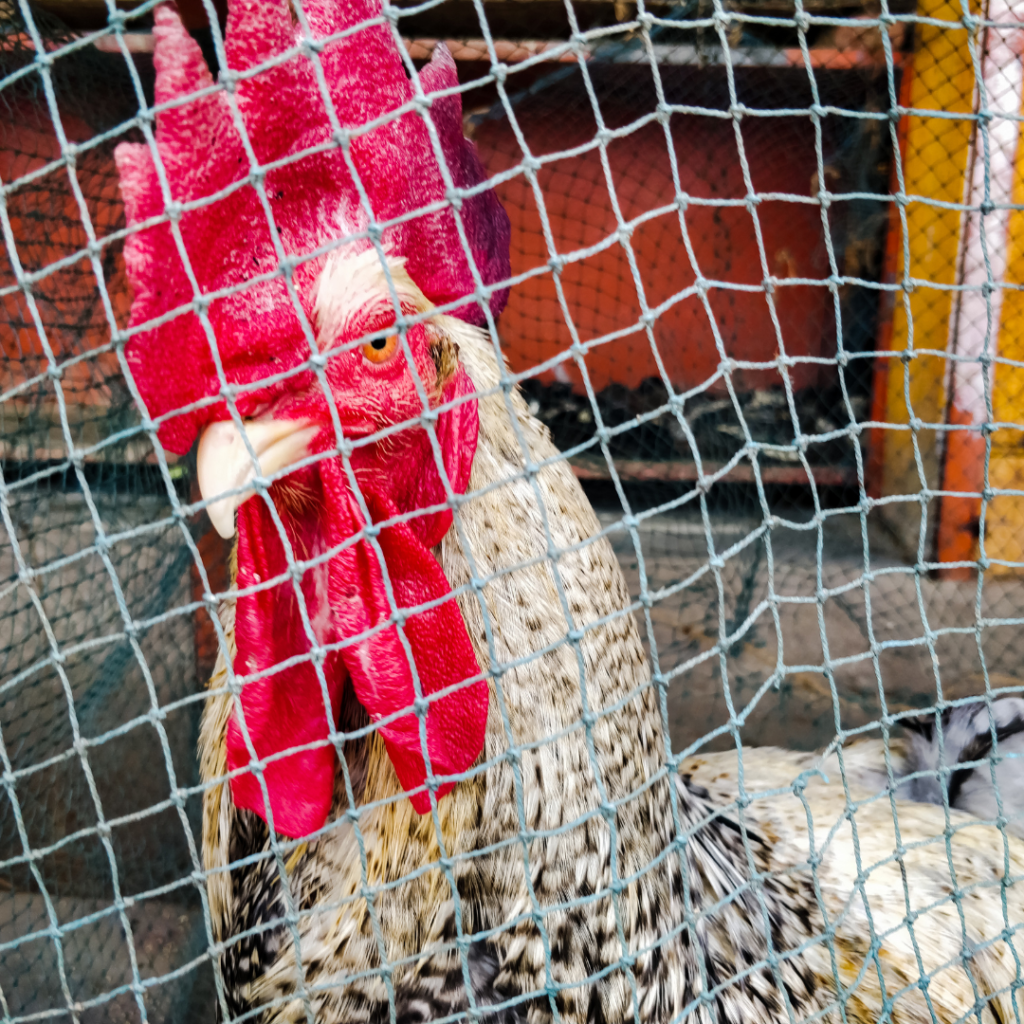
Introduction
Ensuring the safety and security of chickens is crucial when it comes to their raising. In addition to protecting your birds from harm, a well-designed poultry fence also facilitates better movement and health management. When installing a poultry fence, keep the following five things in mind:

1.Choose the Right Material:
Your poultry fence’s lifetime and efficacy are largely dependent on its material. Welded wire, chicken wire, electric netting, and even vinyl or timber fencing are available as options. Chicken wire is affordable, simple to install, and appropriate for smaller birds, such as ducks and hens. For rotating grazing systems, electric netting works as a predator deterrent and is portable. Choose a material based on your unique requirements, taking into account cost, durability, and the kinds of predators that inhabit the area.
2.Establish Proper Height and Depth:
There are many different types of predators, ranging from foxes and raccoons, which live on the ground, to hawks, which are a menace from the air. For this reason, the depth and height of your fence are quite important. Bury the fence at least 6 inches deep to deter ground predators from burrowing. For most poultry, the height should be adequate to prevent them from climbing or jumping over; this is usually about six feet. To discourage animals from digging, think about creating a chicken wire apron at the base of the fence with a small outward slant.
3. Ensure Secure Installation:
4. Consider Additional Protection:
You might require more protection than what a typical fence can provide, depending on your location and the particular predators in your area. Particularly in cases where predators are persistent, electric fencing can serve as an effective deterrent. Pets that guard livestock, like llamas or dogs, can also aid in the protection of your chickens by warning you of potential threats and discouraging would-be predators.


5. Plan for Access and Management:
In addition to safety from predators, accessibility and ease of flock management should be taken into account while creating a poultry fence. Make sure your birds can easily access the feeding stations, water supplies, and locations designated for collecting eggs within the enclosed space. It’s essential to include tightly latching, well-secured gates to keep predators out when you’re not home. Additionally, provide enough room around the fence’s perimeter to do maintenance activities like inspecting it for wear or damage and keeping an eye on the birds without worrying them too much.
Conclusion
In conclusion, careful consideration of materials, height, depth, installation methods, and extra protective measures is necessary while designing and erecting a poultry fence. You may construct a safe and functional enclosure that guarantees the security and welfare of your flock of chickens by keeping these five crucial considerations in mind.

